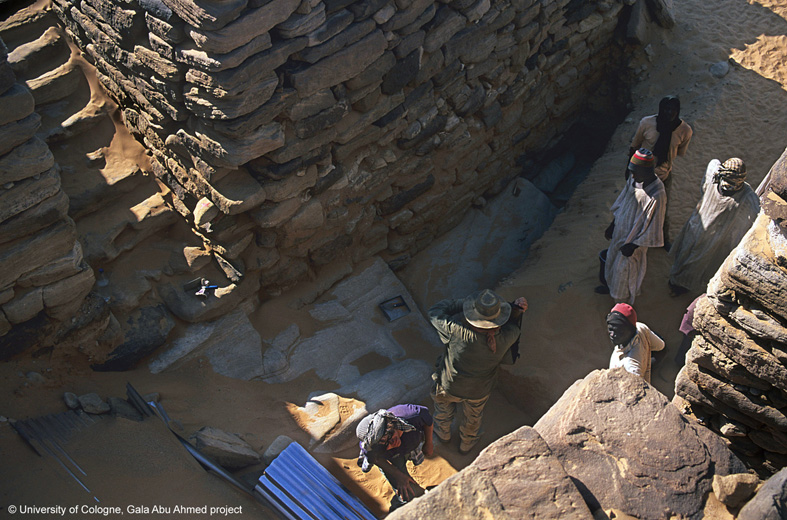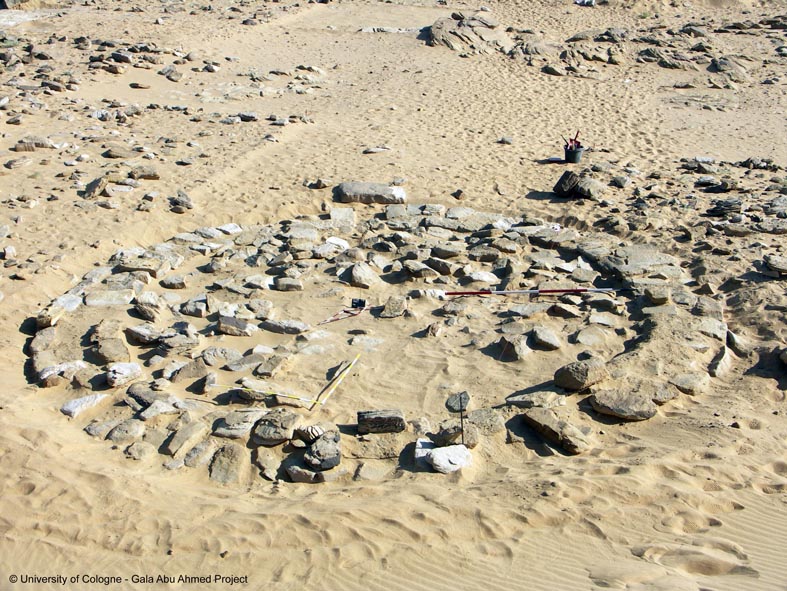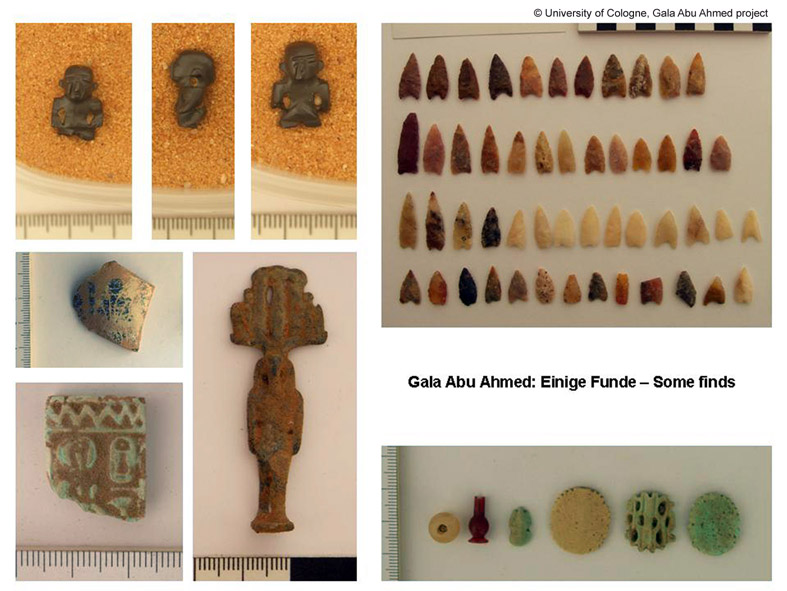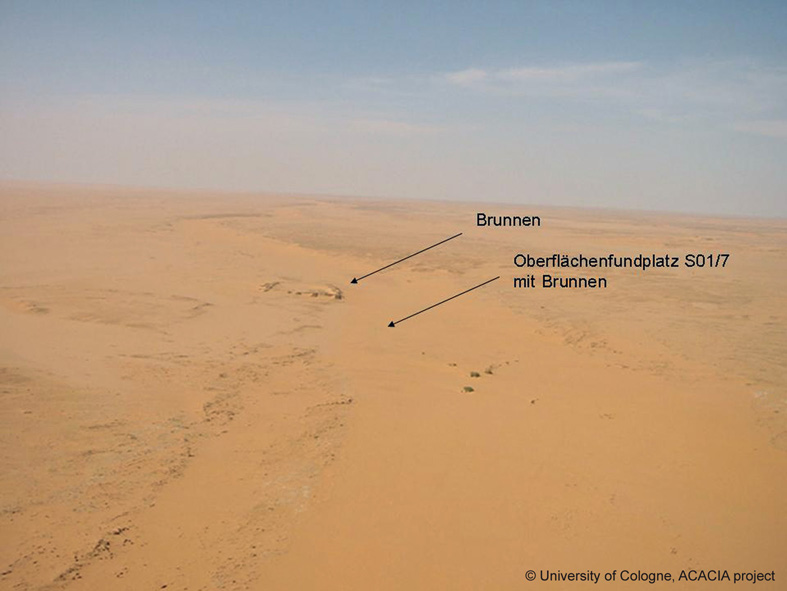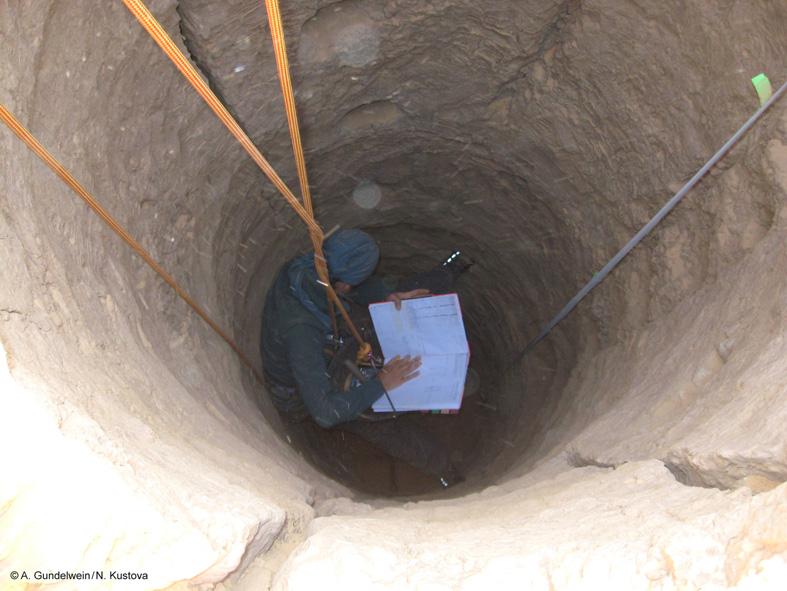Results
Three excavation campaigns took place: firstly three months in autumn and winter 2008/09, secondly in November and December 2009 and thirdly in January and February 2011. The fortress was surveyed by members of the Department of Surveying and Geoinformatics of the Bochum University of Applied Science with a laser scanner and comprehensively documented by an architect. Measurements with the ground penetrating radar allowed to detect more internal structures hidden by the sand.
During excavations the foundations were uncovered at different points and in the area of the northern gateway numerous engravings have been discovered (1-5). Inside the fortress buildings have been exposed, among them two rotundas of about seven metres diameter each, presumably storehouses (6-8). Investigations also took place in the area of the porch to the east of the fortress. Massive walls made of large quartzite boulders may be the foundation of a porch made of perishable material.
There were numerous pottery fragments - besides local ware also Egyptian and even Greek sherds. Also pieces of ornament (beads and amulets), small metal fragments, animal bones and stone artifacts have been recovered (9). Noteworthy is the large number of flint arrowheads with bifacial retouch.
At first sight, the finds fit well with the known time frame of the Napatan period, among the pottery sherds are, however, also fragments from the late New Kingdom. Some 14C-dates also go back to pre-Napatan times, to the 12th century B.C., which indicates a use of the building already since that time. A first classification of the numerous fragments of charcoal indicate much better ecological conditions than today, a savanna vegetation as it is still present in the area of upper Wadi Howar.
On a large open air site (S01/7) northeast of the fortress (10) single finds and features have been mapped and collected and a small concentration of finds was excavated. Two radiocarbon dates indicate an occupation during the 7th and 6th century B.C. The site probably assured the supply of the fortress.
In January 2009, as part of a Fritz-Thyssen-Foundation-funded project at the TU Berlin, Institute for Ecology, Department of Soil Science, pedological investigations (11) in the vicinity of the fortress were made under the local leadership of Dr. Andreas Gundelwein. The results indicate periodical surface waters still at about 2000 B.C.

